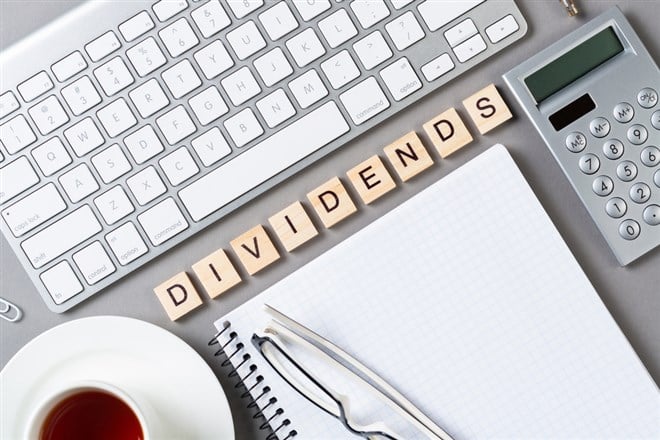
Conventional wisdom says to dial back risk in a shaky stock market. Hunkering down with cash, shifting to defensive sectors, seeking inflation-proof companies and moving to dividend payers are all valid strategies. Cash dividends help buffer market downturns and provide income that can be reinvested in cheaper shares.
A lot of companies pay dividends, so this hardly narrows the list. When inflation strikes, the value of the handouts in real dollar terms can erode.
The solution: A Dividend Aristocrats list.
These are the stock market’s resilient "lords" and "ladies" — noble companies that increase their dividends year after year. Their profitability holds strong even in tough markets and shareholders get rewarded with inflation-busting payments. Within the S&P 500, roughly one in 10 stocks qualify for the "Aristocrat" title, meaning that dividends have gone up for at least 25 consecutive years.
High-society members like Exxon Mobil and Chevron are having great years but most others have languished in the dust. However, a rich dividend history points to an inevitable turnaround. Here are three "roughed-up" Aristocrats to consider.
Will Sherwin-Williams Stock Recover?
The Sherwin-Williams Company (NYSE: SHW) has increased its dividend over the last 44 years. While the 1.2% forward yield won’t blow your socks off, stability matters most.
The country’s biggest producer of paints and coatings sells to a wide range of retailers and industrial customers globally. Cost inflation and shortages of raw materials have hurt recent financial results and pushed the stock down more than 40% year-to-date. These issues will likely improve as 2023 progresses. When combined with management’s price increase and cost reduction moves, it should lead to better quarterly performances.
As the housing market recovers and overseas end market demand picks back up, Sherwin-Williams’ near-term challenges will get rolled over like a fresh coat of paint. Wall Street forecasts 21% EPS growth next year. Shareholders will get another dividend bump and the stock price will eventually resume its long-term uptrend.
Is the Ecolab Inc. Downturn an Opportunity?
Ecolab Inc. (NYSE: ECL) is down 38% this year. This means the specialty chemicals company will probably see its impressive 13-year winning streak come to an end, a feat only outdone by Church & Dwight Co. Inc. among S&P 500 Aristocrats.
One streak that won’t likely come to an end is Ecolab’s 30-year dividend hike streak. Ecolab supplies the food, hotel, health care and energy industries with solutions that make our food and water safer and environment cleaner. Its products are in constant demand even during economic weakness.
Like other industrial businesses, Ecolab faces higher input costs and margin contraction. The market has chosen to focus on these factors which is good news for investors because Ecolab the stock is the cheapest it has been since the COVID-19 crash. Ecolab is an important cog in water treatment, health care sanitation and climate change worldwide.
Prior to COVID-19, Ecolab’s earnings grew at an 11% clip over the 15-year period through 2019. Inflation’s unprecedented impact on its cost structure has dented near-term profitability but is a hiccup the company will overcome.
In the near-term, a game of dominoes is playing out. Ecolab has raised prices to offset cost inflation and its customers are doing the same to offset higher expenses. Eventually, the game will end and Ecolab’s financials will normalize. If a 30-year dividend hike streak can survive 40-year high inflation, shareholders can feel safe making it a core holding.
Why is S&P Global Stock Down?
S&P 500 parent S&P Global Inc. (NYSE: SPGI) is a large-cap Aristocrat after increasing its dividend for 49 straight years. The stock moved higher from 2009 to 2021 but is down 37% in 2022.
S&P Global derives revenue from the research and analytics it provides to credit, equity and commodity investors. It primarily serves investment advisors, investment banks, commercial banks and insurance companies, which use the information to make decisions. S&P’s index side of the business, the smallest segment, owns Dow Jones.
The company has a variety of subscription- and transaction-based revenue sources that generate reliable cash flow. It reinvests this cash flow in growth projects and pays a steadily growing dividend. S&P Global’s accelerated stock buyback plan is another shareholder-friendly attribute that should provide downside protection for the stock as it returns to mid-2020 levels.
A big component of the growth strategy involves acquiring complimentary financial services businesses that expand its product portfolio. The recently completed buyout of IHS Markit is a strong addition that stands to create valuable cross-sell opportunities.
After a multi-year restructuring plan, S&P Global’s main focus is bond ratings, where it faces little competition and has greater growth potential, which is why the stock has been under pressure this year. Rising interest rates are perceived as a bad thing for the company because corporations tend to issue fewer bonds when rates are up. In turn, demand for S&P’s ratings services goes down.
Economists expect interest rates to level off in 2023, which should diminish risk. As signs emerge that the Fed’s rate hike campaign will wind down, look for S&P Global’s share price to recover and increasing cash payouts to continue.












